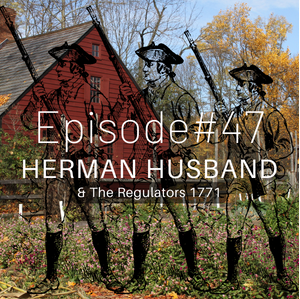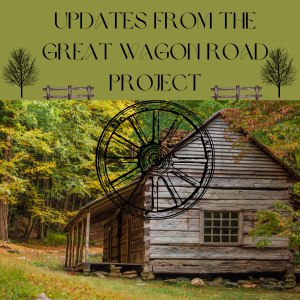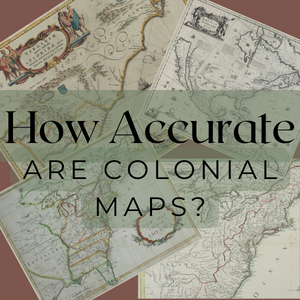The Deep River of North Carolina spans a length of 125 miles from present day Sandy Ridge Road in Guilford County to Chatham County near Moncure. Several Indian artifacts have been found along it’s banks and in researching the name of the river, “sapponah”, an Indian name meaning deep river seems to be the origin. John Lawson recorded in his diary of many bison, several Indian nations and fertile soil along the river during the years of 1700 and 1701. The river is filled with large rocks and boulders with soft waters. This allowed easy paddling down the river for early travels and trade. The history of the river is enormous ranging from the early years to present day. New settlements were established with new grist mills, saw mills, schools and buildings of worship. Land grants are recorded for the Deep River area as early as 1749 located then in Anson and Bladen counties. Several skirmishes occurred during the American Revolutionary War and one of the first cotton mills was built in Ramseur along the river. This article will give details about the early settlers during 1749-1755. Majority of these families migrated from Pennsylvania, Massachusetts and Virginia. They traveled in small groups to reach the lands that John Lawson described 50 years earlier.

Benjamin Foreman-Received a land grant dated October of 1749 consisting of 149 acres lying on the north side of Deep River in Bladen County. The beginning of his tract was located approx. 1/4 of a mile from the mouth of Buck Creek and near Hobby’s Island. Measured to a forked oak tree and followed the Deep River to the first station. Benjamin died in 1796 in Chatham County, NC. At the time of his death, he owned 2 horses, 3 cows and 6 hogs. He also owned 1 cart and 1 pair of wagon wheels. A special note as well that consisted of, “panel of books”.
George Fagon-Received a land grant dated September 30th of 1749 consisting of 200 acres. Located approx. 4 miles above the Great Falls along the Deep River.
Abraham Creeson applied for a land grant in January of 1749 for 200 acres. The deed was never issued and recorded. The chain carriers were Edward Hughes and Richard Wainpot. These were men who worked for surveyor Charles Robinson. After Abraham’s death, his son Joshua Creeson settled in present day Surry County. His first born was named Abraham Creeson.
John Smith applied for 2 land grants, both consisting of 140 acres along the Deep River. The grants were issued in April 2, 1751 and both tracts are located at the Bear Creek connection to the Deep River. John was born April 4, 1729 and died during the year of 1815. He is buried at the Richland Cemetery located in Liberty, Randolph County, NC.
Nicholas Smith applied for 450 acres of land and the deed was issued on April 1, 1751 in Bladen County. His land is located along Buck Creek and Deep River. Nicholas died in 1828 in Richmond County, NC. His will contained no less than 10 notes where he had lend money to his friends and neighbors.
Zebulon Gaunt applied for a land warrant in 1752 along the Deep River consisting of 640 acres. However; the land was never issued to him. Instead, James Carter received the deed in January of 1761, nearly 10 years later.
John Haggart applied for a land warrant dated April 10, 1752 for 640 acres along the Deep River in present day Randolph County. The deed was issued 5 years later on December 24, 1757.
Phillip Haggart applied for a land warrant on April 10, 1752 consisting of 640 acres. The land joined both Abbotts Creek and the Deep River in present day High Point and Jamestown areas. The deed was issued in January of 1755.
James Carter received 642 acres along the south fork of the Deep River in May of 1753. The original deed states 701 acres but it seems that this was incorrect as I researched the remaining deeds pertaining to the property and noted the original tract was 642 acres.
James McCallaum applied for a land warrant in 1753 consisting of 300 acres near the present day county line of Guilford County and Alamance County. James married Mary Harris on April 14, 1787 and was issued 9 pounds on a pay voucher from the American Revolutionary war in 1783. James died before 1800.

William Allen is claimed to be the first settler of Ramseur along the Deep River in Randolph County. After much research, I was able to locate several families living in the area prior to William Allen in 1792. It now appears that the McGee family was living along Betty McGee Creek and Deep River connection and operating a small mill when William Allen acquired the property in 1792. William did name the settlement Allen Falls and attempted a log dam at the water connections in 1799. But this failed years later due to flooding. Hezekiah Allen and Henry Kivett are attributed to have built the first saw mill and grist mill in the Ramseur area. Joseph McGee was actually the first mill operator of this area. His death allowed the land to exchange from McGee to Allen in 1792. To date, I have found no proof of Hezekiah Allen, but I was able to locate Henry Kivett and his home located in Liberty, Randolph County. Henry died in 1882. Years later, the name of Allen Falls failed as well and the settlement was renamed Ramseur.
For years, researchers have been trying to pinpoint the exact location of Thomas Cox and his mill along the Deep River. Herman Cox was the first Cox member to settle along the river in 1757. His brothers, Isaac and William also settled along the Deep River. All three applied for land grants and owned a great deal of property. Thomas Cox operated his mill in 1784 and it appears to be at the water connection of Mill Creek and the Deep River. The discovery of this mill was located on a old map among the archives.

During the year of 1754, permission was granted to Deep River Friends to hold monthly meetings and worship. For the next several years, these meetings were held in the home of Benjamin Beeson until the first meeting house was built in 1758. This Quaker Meeting house was built in present day Guilford County near the Deep River. Many believe that the original members were all from Nantucket, Massachusetts, but this simply is not true. Many of the original members were born in Pennsylvania, Virginia and even North Carolina. Majority of these families traveled the Great Wagon Road into the area with the exception of the Nantucket group. This group traveled by way of the Atlantic Ocean to the Carolina coast. For a partial list of the original members, click here.
Howell Brewer applied for a land grant in Bladen County during the year of 1753. The deed was issued in February of 1754 for the amount of 200 acres along the Deep River. The property is located in present day Randolph County. Howell is listed on the 1790 census living in the same area with a total of 11 persons living in his home.
Phillip Hogget received a land grant dated January of 1755 in the amount of 420. The property is located along the banks of Deep River and Richland Creek. Phillip continued to live in Guilford county until 1800 when he moved to Randolph County.
Buffalo Ford, along Deep River, was one of the most popular crossings located in present day Randolph County. Island Ford was yet another popular crossing. The historical data in relevance to the Buffalo Ford dates back to when the buffalo roamed the Carolina wilderness. Indian trails would follow the buffalo trails, thus the creation of this ford crossing the Deep River.

The Deep River of North Carolina continues to provide it’s history and genealogy everyday. The best resources for researching this area is on a local level. If you are planning a genealogy trip in the future, the Deep River area from Guilford County to Chatham County, NC is filled with data from the Colfax area to Moncure. As always, Piedmont Trails wishes you great success with your research. Enjoy Your Journey !!
Categories: American Revolutionary War, Massachusetts, North Carolina, Pennsylvania











Thank you. William Allen (mentioned above) was my 4th great grandfather.
LikeLiked by 1 person
Thank you. Wonderful to begin filling in the life of my 7th great grandfather William Cox.
LikeLiked by 1 person
Thanks for sharing. The Cox families you mention are my ancestors.
LikeLiked by 1 person
One note I failed to mention in previously visiting/reading this post. The Cox brothers mentioned, Thomas, Harmon, William, Solomon, et al, were with their father William (1692-1767). The elder William began acquiring Granville land grants on Deep River in 1754. A map of the early grants is presented at https://forebearsandkinfolks.org/2022/07/29/mapping-coxs-settlement/
LikeLiked by 1 person